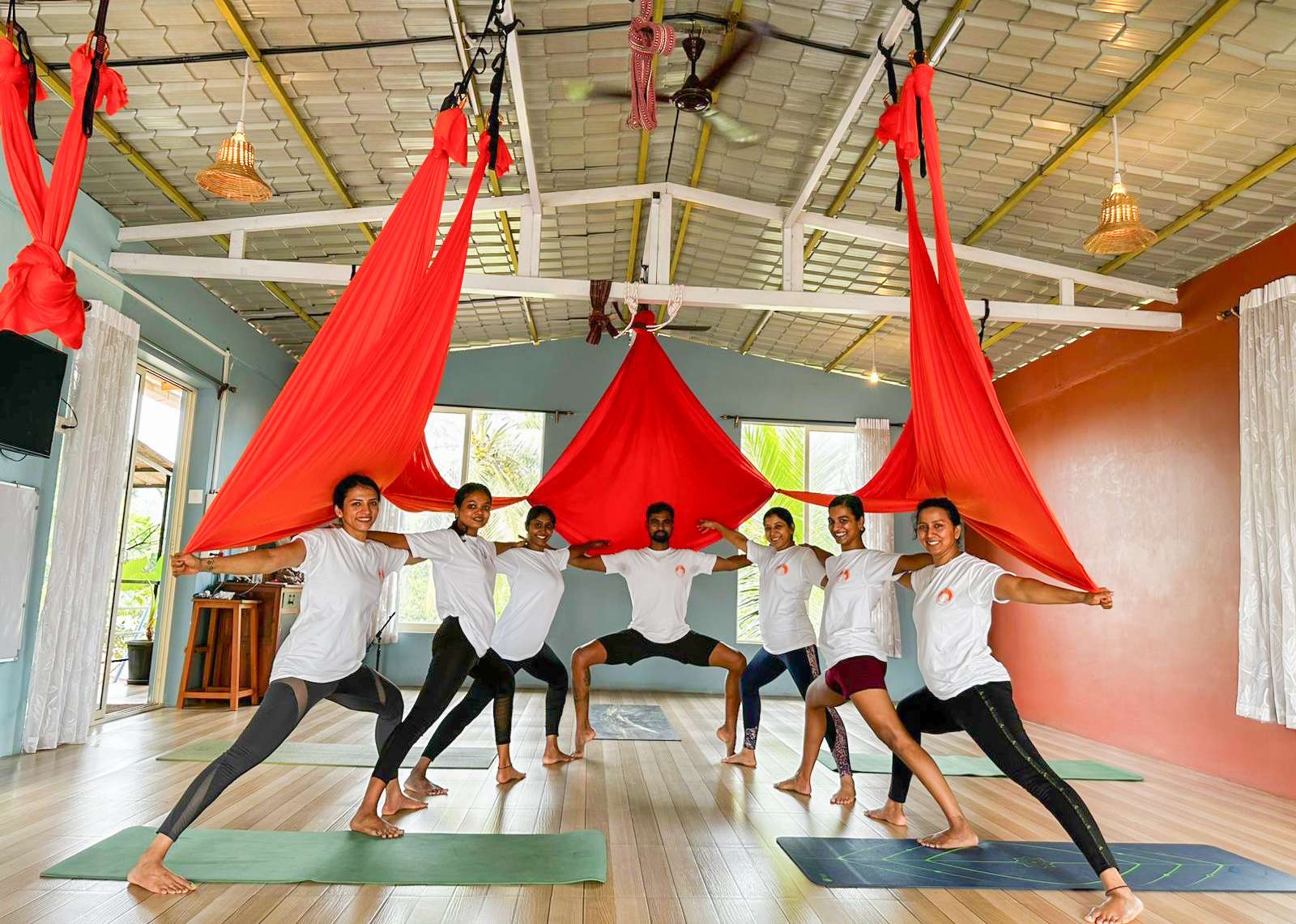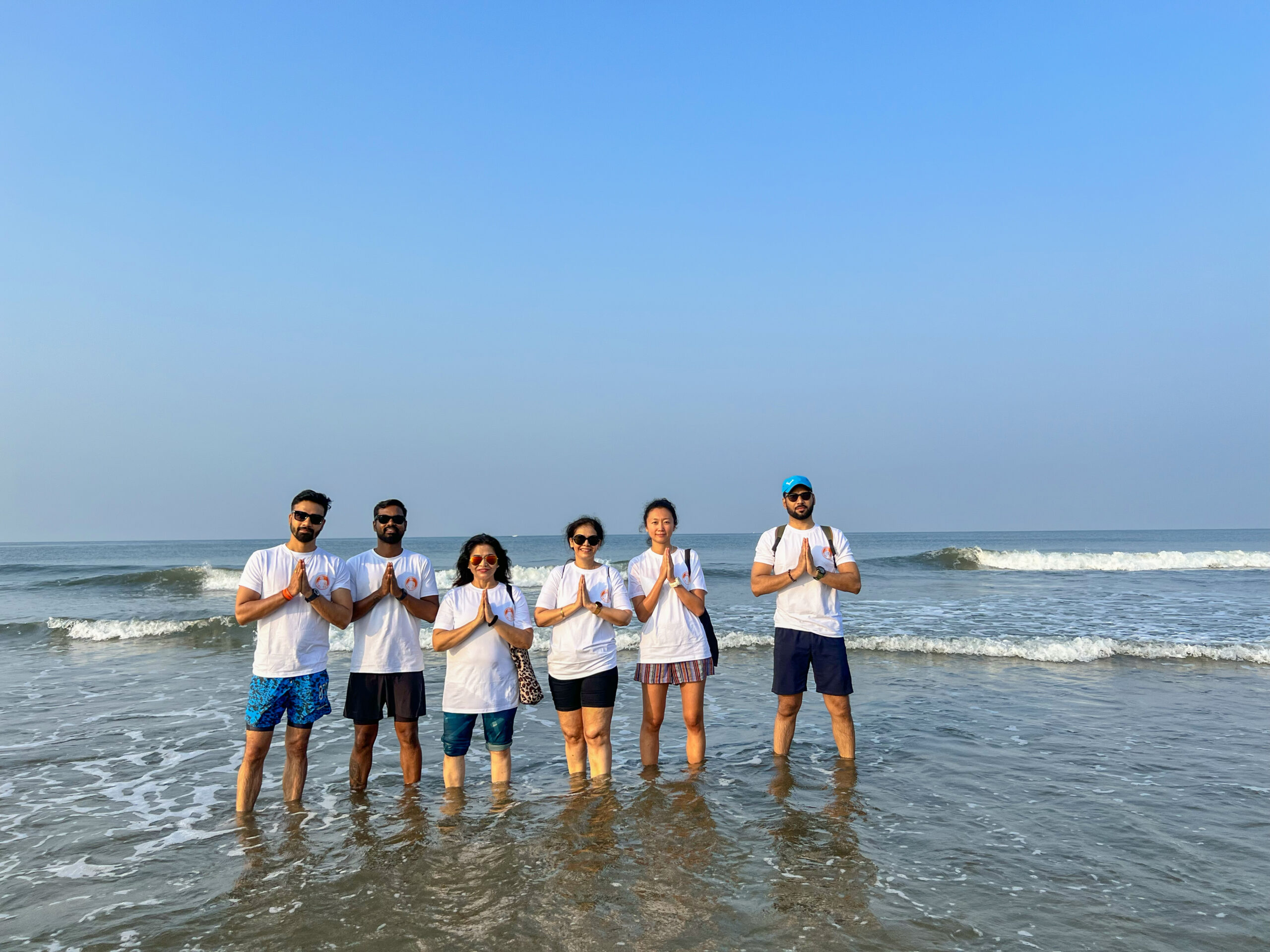Pavanamuktasana (Wind relieving pose)
Pavanamuktasana comes from the Sanskrit, “Pavana mukta ” meaning “Wind relieving”,and “Asana”, meaning “Posture”.
Table of Contents of Pavanamuktasana
- Steps with breathing
- Adjustments
- Benefits
- Contra Indications
- Variations
Steps with breathing
1. Lie flat on the back with legs together and straight. The arms should be by the sides, palms facing down, head, neck and spine should be in a straight line.
2. Inhale deeply, bend both the knees and bring the thighs closer to the chest. Interlock the fingers and clasp the hands on the shin bones just below the knees. While exhaling, raise the head and shoulder and try to place the chin in the space between the two knees. Maintain the asana from 30 seconds to a minute.
3. Slowly lower the head, shoulders and legs and rest in shavasana.
Adjustments
1. You can either interlock your fingers or hold the elbows of the opposite arm.
2. Try to keep your lower back well grounded on the floor.
3. As you exhale, tighten the grip of the hands on the knee and increase the pressure on the chest.
4. It is important to start with the right leg because it presses the ascending colon directly. follow with the left leg which presses the descending colon directly.
Variations
1. Eka Pada (single leg) Pavanamuktasana.
2. Pawanamuktasana without raising the head.
Benefits
1. Strengthens the lower back muscles.
2. It massages the abdomen and digestive organs and is therefore very effective in removing wind and constipation.
3. It strengthens the reproductive organs and also useful for impotence, sterility and menstrual problems.
Contraindications
1. Not to be performed by the people suffering from high blood pressure.
2. Serious back conditions such as sciatica and slipped disc.



